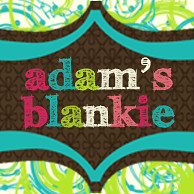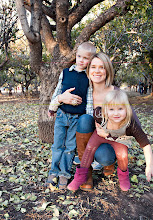Cloth Diaper {TYPES}:
Prefolds
These are probably what generations past think of when you speak of cloth diapering today (except, back then, most weren't even prefolded, they were just a flat cloth with no guidelines for how to fold as a diaper and called "flats," accordingly). They are the most affordable of all cloth diapers (except for the flat, of course, although flats are pretty much extinct these days), but come with, some may argue, the most work. They are rectangular in shape and have extra layers in their center (for where most of the wetness occurs, of course). These are generally made of 100% woven cotton, although they can come in a multitude of fabrics including hemp, bamboo, Indian cotton, and flannel (among others!). You will need a diaper cover for this, as the wetness will leak through to the outer side of the prefold, of course. The covers are sold separately. You can use either the traditional diaper pins to hold in place, or the more modern Snappis work wonders!
Many people use the prefolds for newborns who go through so many diapers a day and then switch to the {easier} AIOs, pocket diapers, etc., after the first few months.
Fitted Diaper
These pretty much look like a disposable diaper, except that they're made of adorable different fabrics, of course! They have elastic around the legs and are made in a variety of fabrics, patterns, sizes & absorbancies.
Pocket Diaper
These cloth diapers are made with a cover sewn onto a layer of fleece and include an opening on the inside for you to put your insert. The pockets allow you to customize how thin or thick you want the diaper to be (depending on the number of inserts you want in there) and, best of all, allow you to control how absorbant the diaper will be. If you have a heavy wetter or are wearing overnight, many advise 3 inserts at a time!
AIO (All-in-One) Diaper
This diaper is about as close to a disposable diaper as they get, convenience-wise. It means just what it says - there are no inserts to put in - it is just ready to use as is and includes the cover and absorbancy layer all-in-one. No stuffing, no layering - just put it on and wear it. You can't adjust the absorbancy with these types of cloth diapers, of course, but they have the convenience being able to put on with little fuss and then washing once soiled.
The diaper's {ANATOMY}:
PUL (polyurethane laminate)
This is the waterproof fabric used in most cloth diapers (the cover portion) out there.
Microfleece
Most pocket cloth diapers use this material for the part of the diaper that will be right up against baby's skin. It is a very soft fabric that does not absorb but insteads wicks moisture away from baby's skin to help prevent rashes and keep baby dry.
Aplix
This is a certain type of closure used on some diapers. You basically will either have APLIX (or some other velcro option) with the tabs or you'll have snaps. Aplix allows for easier adjustment, of course, although snaps are more durable and most likely to last longer, in my opinion.
Gusset
This term refers to the insert in the seam of the diapers, that allows for easy expansion and strength. They basically move with the baby's movement and thereby aid in preventing against leakage by keeping the diaper snug with the baby.
Hope this helps anyone out there trying to figure out the cloth diapering world! I certain realize how overwhelming it seems, having recently become more acquainted with them myself, but this should offer a good guideline to help you get started, at least!
Happy diapering, and let's let the giveaways begin TOMORROW!!
adamsblankie@gmail.com
www.adamsblankie.etsy.com






















0 comments:
Add Your Couture Comment